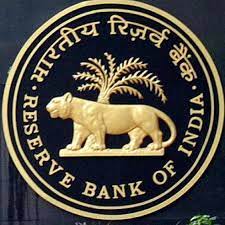Small Finance Bank:

The Reserve Bank of India (RBI) has received applications from two more entities under the “on-tap” small finance bank licensing guidelines of 2019.
- An “on-tap” facility would mean the RBI will accept applications and grant licences for banks throughout the year.
- These are the financial institutions which provide financial services to the unserved and unbanked region of the country.
- Registered as a public limited company under the Companies Act, 2013.
- Needs to open at least 25% of its banking outlets in unbanked rural centres.
- Required to extend 75% of its adjusted net bank credit to the Priority Sector Lending (PSL).
- The RBI mandates banks to lend a certain portion of their funds to specified sectors, like agriculture, Micro, Small and Medium Enterprises (MSMEs), export credit, education, housing, social infrastructure, renewable energy among others.
- At least 50% of its loan portfolio should constitute loans and advances of up to Rs. 25 lakhs.
- The maximum loan size and investment limit exposure to a single and group debtor would be restricted to 10% and 15% of its capital funds, respectively.
- They cannot extend large loans.
- If the initial shareholding by promoters in the bank is in excess of 40% of paid-up voting equity capital, it should be brought down to 40% within a period of 5 years.
- Subject to Cash Reserve Ratio (CRR) and Statutory Liquidity Ratio (SLR) requirements.
- Banks are required to hold a certain proportion of their deposits in the form of cash known as the CRR.
- This minimum ratio (that is the part of the total deposits to be held as cash) is stipulated by the RBI.
- The share of Net Demand and Time Liabilities that a bank is required to maintain safe and liquid assets, such as government securities, cash, and gold is termed as SLR.
Eligibility for Setting up SFBs:
- Resident individuals/professionals with 10 years of experience in banking and finance.
- The companies and societies owned and controlled by residents.
- Existing Non-Banking Finance Companies (NBFCs), Micro Finance Institutions (MFIs), Local Area Banks (LABs) and payment banks that are owned and controlled by residents.
- Primarily undertake basic banking activities of acceptance of deposits and lending to unserved and underserved sections including small business units, small and marginal farmers, micro and small industries and unorganised sector entities.
- Undertake other non-risk sharing simple financial services activities such as the distribution of mutual fund units, insurance products, pension products, etc. with the prior approval of the RBI.




